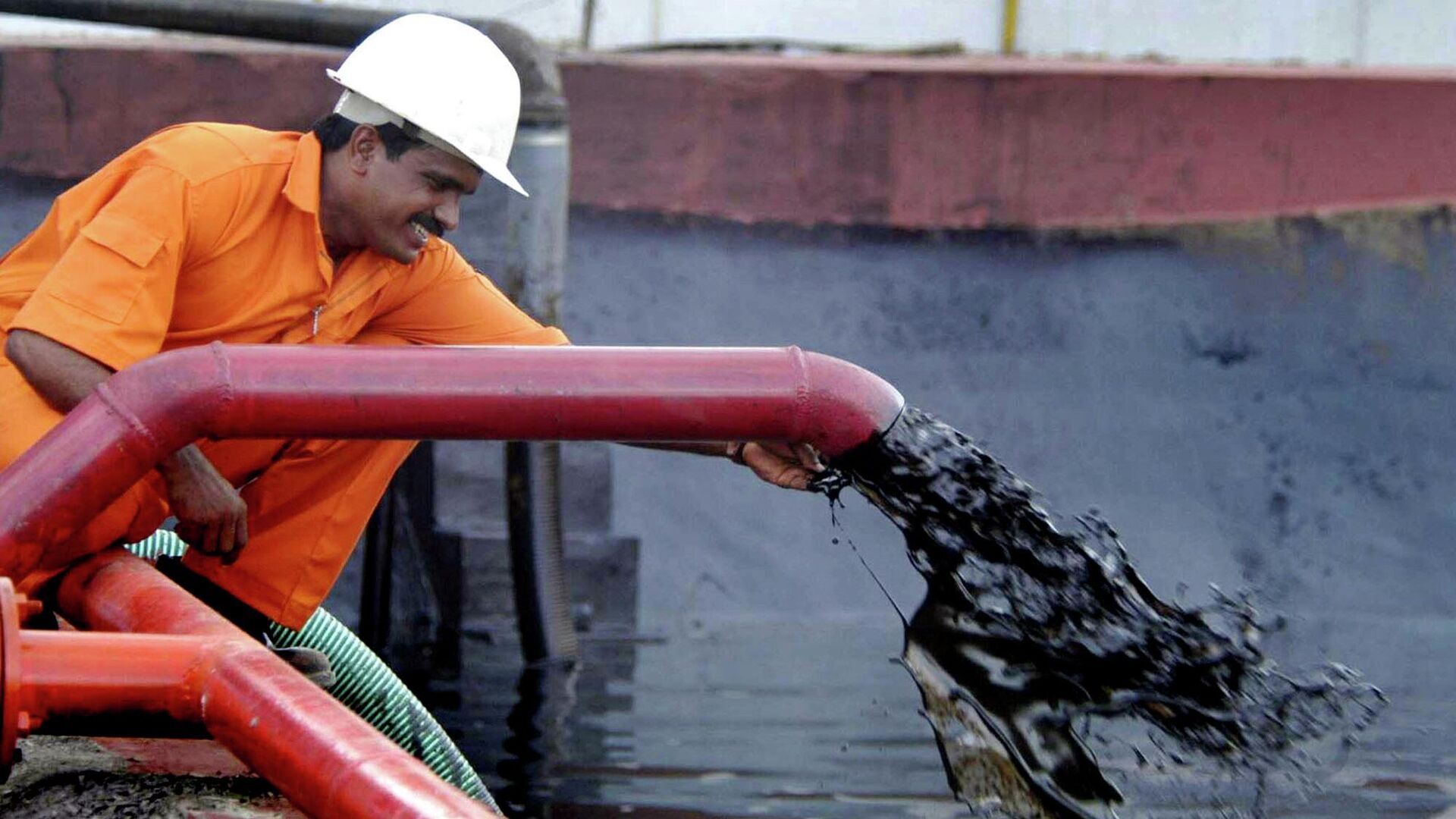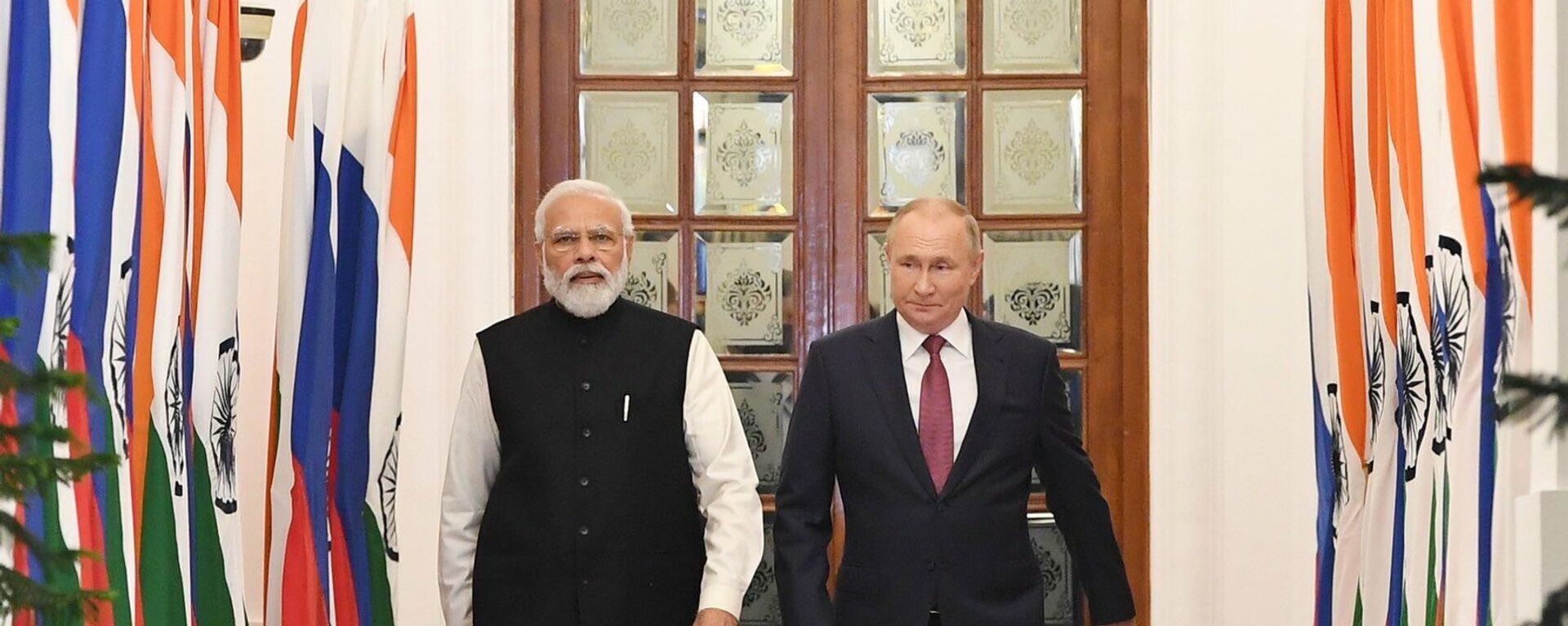https://sputniknews.in/20251010/diwali-sparks-surge-is-india-doubling-down-on-russian-crude-imports-9902237.html
Diwali Sparks Surge: Is India Doubling Down on Russian Crude Imports?
Diwali Sparks Surge: Is India Doubling Down on Russian Crude Imports?
Sputnik India
Russia continues to be India's leading crude supplier, holding approximately one-third share in the country's oil basket. 10.10.2025, Sputnik India
2025-10-10T20:01+0530
2025-10-10T20:01+0530
2025-10-10T20:02+0530
sputnik opinion
india
russia
us
european union (eu)
russian oil
oil exporters
global oil production
oil supplies
moscow
https://cdn1.img.sputniknews.in/img/07e7/08/09/3489485_0:0:2000:1125_1920x0_80_0_0_d8263fea6960b3d761448f81f54b2ac1.jpg
Russian oil supplies to India will remain the core of India's energy imports, with New Delhi continuously rebuffing external pressure from the United States, which has imposed 25 percent punitive levies for its purchase of crude from the Eurasian state, experts have said.Concurrently, Indian refiners are exporting gasoline and diesel at their highest levels in recent years, driven by expanded refining capacity and enhanced ethanol blending, which has freed up additional fuel for overseas markets, he added.To sustain these export volumes and optimize gross refining margins, refiners are increasingly turning to Russian crude, particularly to meet Europe's rising demand for winter heating oil, the commodities pundit noted.India's crude imports in September were around 4,664 kbd (thousand barrels per day), up 170 kbd month-on-month and flat year-on-year, Sumit Ritolia, Lead Research Analyst, Refining & Modeling, at global trade intelligence company Kpler, highlighted in a conversation with Sputnik India. However, Russian crude maintained its position as the largest single supplier, contributing 1,611 kbd (a 34.0% share), he added.Russian barrels remain among the most economical feedstock options for Indian refiners. Looking ahead to the festive season (October–December 2025), refinery operations are expected to stay robust, with fewer maintenance turnarounds than last year, the expert suggested. Moreover, Russian barrels are likely to remain the core of the import mix, though refiners are clearly placing more emphasis on diversification across the Middle East, Americas, and Africa, he stressed.India-bound Russian spot loadings are expected to remain slightly higher in Quarter 4 (Q4) compared to Quarter 3 (Q3). In Q4 (Oct-Dec), Current flows of 1.6–1.8 million barrels per day (mbd) of Russian imports look more realistic, the crude analyst underscored.The India-Russia crude relationship has evolved into a strategic balancing act rather than just a matter of volume. Despite a clear and determined push for diversification, India unlikely to step away from Russian supplies in the near to mid-term, with Russian crude remaining a cornerstone of its energy strategy, he underlined.Supply chains are embedded, term deals are locked, and contracts are typically signed 6–10 weeks before arrival. Rewiring all that takes time. In practice, Indian refiners are gradually broadening their baskets, not to replace Russia in the short term, but to enhance energy security, continuity, and flexibility, the energy affairs commentator remarked.If margins compress or retail prices rise, the result could be inflation, political backlash, and weaker refinery profitability. Higher-cost crude could also worsen the budget, forex reserves, and balance of payments pressures. Alternatives like Iran or Venezuela remain entangled in sanctions, complicating substitution unless the US explicitly relaxes restrictions, he pointed out.For now, Russia will remain the central pillar of India's crude sourcing strategy, as the economics remain too compelling to ignore. Refiners continue to diversify volumes incrementally from the Middle East, Latin America, and the US, but this diversification is driven more by operational flexibility and arbitrage opportunities, the market specialist argued.
https://sputniknews.in/20250930/-lavrov-9848912.html
india
russia
us
moscow
delhi
new delhi
Sputnik India
feedback.hindi@sputniknews.com
+74956456601
MIA „Rossiya Segodnya“
2025
Pawan Atri
https://cdn1.img.sputniknews.in/img/07e6/0c/13/139630_147:0:831:684_100x100_80_0_0_8fa2b25903e7787fe6a2698552c167df.png
Pawan Atri
https://cdn1.img.sputniknews.in/img/07e6/0c/13/139630_147:0:831:684_100x100_80_0_0_8fa2b25903e7787fe6a2698552c167df.png
News
en_IN
Sputnik India
feedback.hindi@sputniknews.com
+74956456601
MIA „Rossiya Segodnya“
Sputnik India
feedback.hindi@sputniknews.com
+74956456601
MIA „Rossiya Segodnya“
Pawan Atri
https://cdn1.img.sputniknews.in/img/07e6/0c/13/139630_147:0:831:684_100x100_80_0_0_8fa2b25903e7787fe6a2698552c167df.png
india, russia, us, european union (eu), russian oil, oil exporters, global oil production, oil supplies, moscow, delhi, new delhi, energy security, energy prices
india, russia, us, european union (eu), russian oil, oil exporters, global oil production, oil supplies, moscow, delhi, new delhi, energy security, energy prices
Diwali Sparks Surge: Is India Doubling Down on Russian Crude Imports?
20:01 10.10.2025 (Updated: 20:02 10.10.2025) Russia continues to be India's leading crude supplier, holding approximately one-third share in the country's oil basket.
Russian oil supplies to India will remain the core of India's energy imports, with New Delhi continuously rebuffing external pressure from the United States, which has imposed 25 percent punitive levies for its purchase of crude from the Eurasian state, experts have said.
"India's crude oil imports from Russia are expected to remain resilient, supported by a strategic blend of economic and operational factors. Refinery throughput, which dipped by 4.4% month-on-month in August to 5.27 million barrels per day (22.29 million metric tons), still marked a 3% increase year-on-year, indicating a steady recovery in processing activity," Arpit Chandna, a Customer Success Manager at Refinitiv, a London Stock Exchange Group (LSEG) firm, told Sputnik India.
Concurrently, Indian refiners are exporting gasoline and diesel at their highest levels in recent years, driven by expanded refining capacity and enhanced ethanol blending, which has freed up additional fuel for overseas markets, he added.
To sustain these export volumes and optimize gross refining margins, refiners are increasingly turning to Russian crude, particularly to meet Europe's rising
demand for winter heating oil, the commodities pundit noted.
"Despite external pressures, including US tariffs and diplomatic concerns, India has reaffirmed that its energy procurement decisions are guided by economic rationale and national energy security, not political considerations," Chandna underlined.
India's crude imports in September were around 4,664 kbd (thousand barrels per day), up 170 kbd month-on-month and flat year-on-year, Sumit Ritolia, Lead Research Analyst, Refining & Modeling, at global trade intelligence company Kpler, highlighted in a conversation with Sputnik India. However, Russian crude maintained its position as the largest single supplier, contributing 1,611 kbd (a 34.0% share), he added.
Russian barrels remain among the most economical feedstock options for Indian refiners. Looking ahead to the festive season (October–December 2025), refinery operations are expected to stay robust, with fewer maintenance turnarounds than last year, the expert suggested. Moreover, Russian barrels are likely to remain the core of the import mix, though refiners
are clearly placing more emphasis on diversification across the Middle East, Americas, and Africa, he stressed.
India-bound Russian spot loadings are expected to remain slightly higher in Quarter 4 (Q4) compared to Quarter 3 (Q3). In Q4 (Oct-Dec), Current flows of 1.6–1.8 million barrels per day (mbd) of Russian imports look more realistic, the crude analyst underscored.
"Besides, one bullish factor for India's Russian crude imports is the anticipated resumption of northern Iraqi crude exports via Turkey's Ceyhan port. If Turkey reduces Russian crude intake — estimated at 350 kbd in Q3 2025 — as EU sanctions tighten further from January 2026, those displaced barrels are likely to flow to Asia, with India and China as major destinations," Ritolia stated.
The India-Russia crude relationship has evolved into a strategic balancing act rather than just a matter of volume. Despite a clear and determined push for diversification, India unlikely to step away from Russian supplies in the near to mid-term, with Russian crude remaining a cornerstone of its energy strategy, he underlined.
Supply chains are embedded, term deals are locked, and contracts are typically signed 6–10 weeks before arrival. Rewiring all that takes time. In practice, Indian refiners are gradually broadening their baskets, not to replace Russia
in the short term, but to enhance energy security, continuity, and flexibility, the energy affairs commentator remarked.
"The reality is that cutting Russian imports would be difficult, costly, and risky. Russia still supplies around 30-35% of India's crude. Substitution would require rapid scaling from multiple suppliers, at higher costs," Ritolia emphasised.
If margins compress or retail prices rise, the result could be inflation, political backlash, and weaker refinery profitability. Higher-cost crude could also worsen the budget, forex reserves, and balance of payments pressures. Alternatives like Iran or Venezuela remain entangled in sanctions, complicating substitution unless the US explicitly relaxes restrictions, he pointed out.
For now, Russia will remain the central pillar of India's crude sourcing strategy, as the
economics remain too compelling to ignore. Refiners continue to diversify volumes incrementally from the Middle East, Latin America, and the US, but this diversification is driven more by operational flexibility and arbitrage opportunities, the market specialist argued.
"What's more, US grades face both logistical disadvantages and compatibility challenges with Indian refining systems, which makes a material swing toward American crude unlikely. Though Indian refiners continue to diversify and try to get cargoes that suit the economics, Kpler data shows Indian imports of US crude have averaged 280 kbd so far in 2025, an increase from 199 kbd in 2024, hitting a yearly high of 364 kbd in July, but the probability of a significant upside is next to nil," Ritolia concluded.



